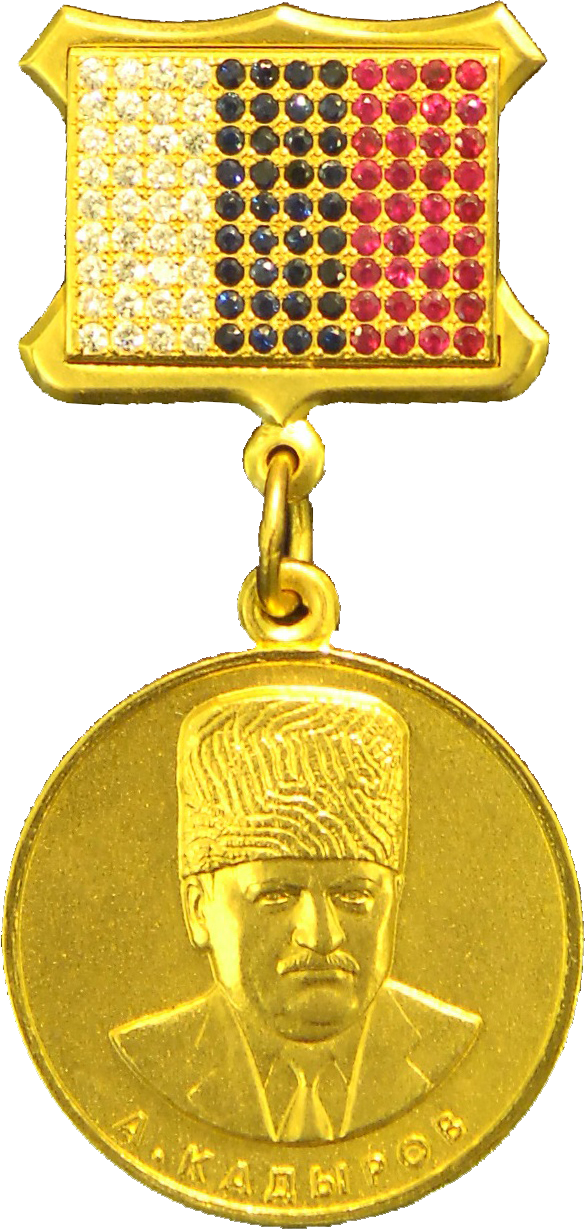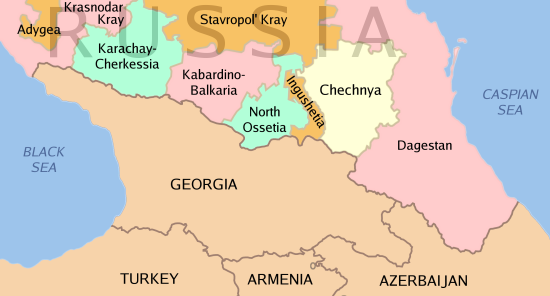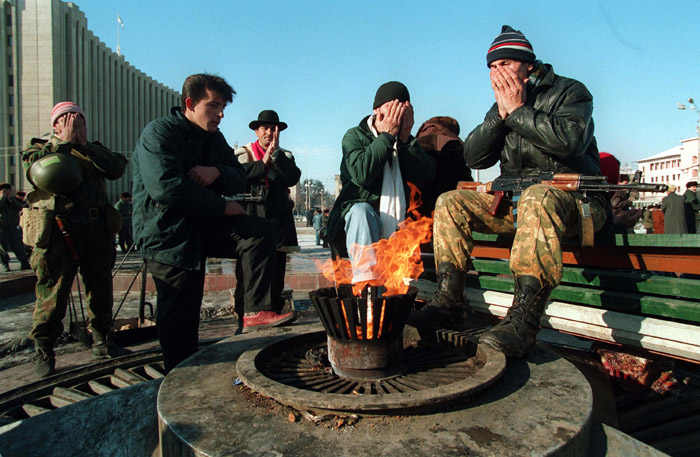|
Khaybakha
Khaybakha ( ce, Хьайбаха; russian: Хайбах), also spelled Khaibakha or Khaibakh, is a non-residential village in Galanchozhsky District, Chechnya. Administrative and municipal status Municipally, Khaybakha is incorporated into Gekhi-Chuyskoye rural settlement. It is one of the three settlements included in it. Until 31 December 2019, Aka-Bass was included in Achkhoy-Martanovsky District, but on 1 January 2020 - was transferred to the control of Urus-Martanovsky District. At the same time, Khaybakha is a part of Galanchozhsky District. Until 1944, it was the administrative center of the Khaybakhoyskoye rural settlement of that district. Geography Khaybakha is located in the center of Galanchozhsky District, on the left bank of the Gekhi River. It is located east of Aka-Bass and south-west of Grozny. The nearest settlements to Khaybakha are Yalkhara in the north-west, Aka-Bass in the west, and Charmakha in the east. History On the doorway of the ba ... [...More Info...] [...Related Items...] OR: [Wikipedia] [Google] [Baidu] |
Galanchozhsky District
Galanchozhsky District ( ce, Галайн-ЧӀажин кӀошт), (russian: Галанчожский район) is a district (raion) of Chechnya. The district was recreated in 2012. However, the official restoration process of the district is not complete. The district also existed between 1925 and 1944. The administrative center is the village of Aka-Bass ( ce, Акха-Басс). Location Galanchozhsky District is located in the south-west of Chechnya. It shares borders with Achkhoy-Martanovsky District in the north, Urus-Martanovsky District in the north-east, Shatoysky District in the east, Itum-Kalinsky District in the south-east, Georgia (country), Georgia to the south, and Ingushetia to the west. History In 1925, Galanchozhsky District was first formed, as a part of the Chechen Autonomous Oblast, where it existed until 1929. It was restored in 1935, as a part of the Checheno-Ingush Autonomous Soviet Socialist Republic, Chechen-Ingush ASSR. On 23 February 1944, the ... [...More Info...] [...Related Items...] OR: [Wikipedia] [Google] [Baidu] |
Yalkhoroy
Khevkharacha-Yalkhara ( ce, Хьевхьарача-Ялхара or Ялхара), (russian: Ялхорой), or just Yalkhara, is a village in Galanchozhsky District, Chechnya. Location Yalkhara is located in the center of Galanchozhsky District. It is located north-west of Aka-Bass and south-west of Grozny. The closest settlements to Yalkhara are Tsecha-Äkhk in the west, Aka-Bass in the south, and Khaybakha in the south-east. History Yalkhara is the ancestral home of the Yalkhoroy teip. From 1940 to 1944, Yalkhara was the administrative center of Galanchozhsky District. On 27 February 1944, after the genocide and deportation of the Chechen and Ingush people and the Chechen-Ingush ASSR was abolished, the village of Yalkhara was abandoned and destroyed. In 1957, after the Vaynakh people returned and the Chechen-Ingush ASSR was restored, the former residents of Galanchozhsky District were forbidden to resettle there. As a result, most former residents of Yalkhara ... [...More Info...] [...Related Items...] OR: [Wikipedia] [Google] [Baidu] |
Ramzan Kadyrov
Ramzan Akhmadovich Kadyrov ce, КъадаргӀеран Ахьмат-кӏант Рамзан, translit= (born 5 October 1976) is a Russian politician who currently serves as the Head of the Chechen Republic. He was formerly affiliated to the Chechen Independence movement, through his father who was the separatist appointed mufti of Chechnya. He is a colonel general in the Russian military. Kadyrov is the son of former Chechen President Akhmad Kadyrov, who switched sides in the Second Chechen War by offering his service to Vladimir Putin's administration in Russia and became Chechen president in 2003. Akhmad Kadyrov was assassinated in May 2004. In February 2007, Ramzan Kadyrov replaced Alu Alkhanov as president, shortly after he had turned 30, which is the minimum age for the post. He was engaged in violent power struggles with Chechen commanders Sulim Yamadayev (d. 2009) and Said-Magomed Kakiyev for overall military authority, and with Alkhanov for political authority. Si ... [...More Info...] [...Related Items...] OR: [Wikipedia] [Google] [Baidu] |
Second Chechen War
The Second Chechen War (russian: Втора́я чече́нская война́, ) took place in Chechnya and the border regions of the North Caucasus between the Russia, Russian Federation and the Chechen Republic of Ichkeria, from August 1999 to April 2009. In August 1999, Islamist fighters from Chechnya War of Dagestan, infiltrated Russia's Dagestan region, violating Russia's borders. During the initial campaign, Russians, Russian military and pro-Russian Chechens, Chechen paramilitary forces faced Chechen separatists in open combat and seized the Chechen capital Grozny after a winter Battle of Grozny (1999–2000), siege that lasted from December 1999 until February 2000. Russia established direct rule over Chechnya in May 2000 although Chechen militant Resistance movement, resistance throughout the North Caucasus region continued to inflict heavy Russian casualties and challenge Russian political control over Chechnya for several years. Both sides carried out attacks a ... [...More Info...] [...Related Items...] OR: [Wikipedia] [Google] [Baidu] |
First Chechen War
The First Chechen War, also known as the First Chechen Campaign,, [Armed conflict in the Chechen Republic and on bordering territories of the Russian Federation] Федеральный закон № 5-ФЗ от 12 января 1995 (в редакции от 27 ноября 2002) "О ветеранах" or the First Russian-Chechen war, was a war of independence which the Chechen Republic of Ichkeria waged against the Russia, Russian Federation from December 1994 to August 1996. The first war was preceded by the Russian Intervention in Ichkeria, in which Russia tried to covertly overthrow the Ichkerian government. After the initial campaign of 1994–1995, culminating in the devastating Battle of Grozny (1994–1995), Battle of Grozny, Russian federal forces attempted to seize control of the mountainous area of Chechnya, but they faced heavy resistance from Chechen guerrilla warfare, guerrillas and raids on the flatlands. Despite Russia's overwhelming advantages in firepower, manp ... [...More Info...] [...Related Items...] OR: [Wikipedia] [Google] [Baidu] |
Petroglyph
A petroglyph is an image created by removing part of a rock surface by incising, picking, carving, or abrading, as a form of rock art. Outside North America, scholars often use terms such as "carving", "engraving", or other descriptions of the technique to refer to such images. Petroglyphs are found worldwide, and are often associated with prehistoric peoples. The word comes from the Greek prefix , from meaning "stone", and meaning "carve", and was originally coined in French as . Another form of petroglyph, normally found in literate cultures, a rock relief or rock-cut relief is a relief sculpture carved on "living rock" such as a cliff, rather than a detached piece of stone. While these relief carvings are a category of rock art, sometimes found in conjunction with rock-cut architecture, they tend to be omitted in most works on rock art, which concentrate on engravings and paintings by prehistoric or nonliterate cultures. Some of these reliefs exploit the rock's nat ... [...More Info...] [...Related Items...] OR: [Wikipedia] [Google] [Baidu] |
Grozny
Grozny ( rus, Грозный, p=ˈgroznɨj; ce, Соьлжа-ГӀала, translit=Sölƶa-Ġala), also spelled Groznyy, is the capital city of Chechnya, Russia. The city lies on the Sunzha River. According to the 2010 census, it had a population of 271,573 — up from 210,720 recorded in the 2002 census, but still only about two-thirds of 399,688 recorded in the 1989 census. It was previously known as (until 1870). Names In Russian, "Grozny" means "fearsome", "menacing", or "redoubtable", the same word as in Ivan Grozny ( Ivan the Terrible). While the official name in Chechen is the same, informally the city is known as "" (""), which literally means "the city () on the Sunzha River ()". In 1996, during the First Chechen War, the Chechen separatists renamed the city Dzhokhar-Ghala ( ce, Джовхар-ГӀала, Dƶovxar-Ġala), literally Dzhokhar City, or Dzhokhar/Djohar for short, after Dzhokhar Dudayev, the first president of the Chechen Republic of Ichker ... [...More Info...] [...Related Items...] OR: [Wikipedia] [Google] [Baidu] |
Chechnya
Chechnya ( rus, Чечня́, Chechnyá, p=tɕɪtɕˈnʲa; ce, Нохчийчоь, Noxçiyçö), officially the Chechen Republic,; ce, Нохчийн Республика, Noxçiyn Respublika is a republic of Russia. It is situated in the North Caucasus of Eastern Europe, close to the Caspian Sea. The republic forms a part of the North Caucasian Federal District, and shares land borders with the country of Georgia to its south; with the Russian republics of Dagestan, Ingushetia, and North Ossetia-Alania to its east, north, and west; and with Stavropol Krai to its northwest. After the dissolution of the Soviet Union in 1991, the Checheno-Ingush ASSR split into two parts: the Republic of Ingushetia and the Chechen Republic. The latter proclaimed the Chechen Republic of Ichkeria, which sought independence. Following the First Chechen War of 1994–1996 with Russia, Chechnya gained ''de facto'' independence as the Chechen Republic of Ichkeria, although ''de jure'' it rem ... [...More Info...] [...Related Items...] OR: [Wikipedia] [Google] [Baidu] |
Aka-Bass
Galanchozh, ce, ГалайнчIаж, Galaynchazh formerly Akhbosoy, ce, Акха-Басс, Aqa-Bass is a non-residential rural locality (a '' selo'') in Urus-Martanovsky District of the Republic of Chechnya, Russia. Administrative and municipal status Municipally, Galanchozh is incorporated into Gekhi-Chuyskoye rural settlement. It is one of the three settlements included in it. Until 31 December 2019, Galanchozh was included in Achkhoy-Martanovsky District, but on 1 January 2020 - was transferred to the control of Urus-Martanovsky District. At the same time, Galanchozh is the administrative center of Galanchozhsky District. The district is formally restored, but it is not a part of the administrative-territorial structure of the Chechen Republic. Geography Aka-Bass is located in the center of Galanchozhsky District, on the left bank of the Osu-Khi river. It is located less than north-west from Lake Galanchozh. It is south-west of the city of Grozny. The closest se ... [...More Info...] [...Related Items...] OR: [Wikipedia] [Google] [Baidu] |
Gekhi River
Geghi ( hy, Գեղի) is a village in the Kajaran Municipality of the Syunik Province in Armenia. History The village had 570 inhabitants in 1959, 932 in 1970 and 1,115 inhabitants in 1979. T. Kh. Hakobyan, St. T. Melik-Bakhshyan, H. Kh. Barseghyan ''«Երևան»'' (Yerevan). Dictionary of Toponymy of Armenia and Adjacent Territories. vol. v. Yerevan, Armenia: Yerevan State University 1986. p.909 Population The Statistical Committee of Armenia reported the community's population as 172 at the 2011 Armenian census, up from 138 in 2010, but down from 227 at the 2001 census. Municipal administration Geghi was previously a community which included the villages of Geghi, Geghavank, Kard, Kitsk, Verin Geghavank and Karut, until the June 2017 administrative and territorial reforms, when the village became a part of the Kajaran Municipality Kajaran Municipality, referred to as Kajaran Community ( hy, Քաջարան Համայնք ''Kajaran Hamaynk''), is an urban community and a ... [...More Info...] [...Related Items...] OR: [Wikipedia] [Google] [Baidu] |





